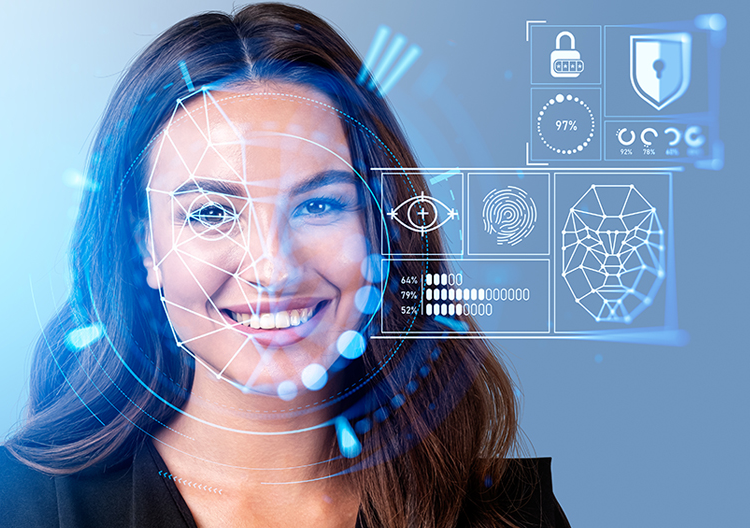The introduction of deep artificial intelligence (AI) has brought a lot of advancements in technology, creativity and communication. Alongside these advancements are new threats, such as the alarming rise of deepfakes – highly convincing audio or video of a person, altered to manipulate or misrepresent someone by doing or saying something that was not actually done or said. These media artefacts mimic real people’s faces, voices and gestures so accurately, that even trained eyes can be easily deceived.
Deepfakes are very dangerous as they pose a serious threat to truth, truth and cybersecurity. They are no longer mere tools used for entertainment and satire; they are now being used to promote misinformation, commit fraudulent activities, manipulate public opinion and launch highly intelligent cyberattacks. As these threats from deepfake advance, so must the defence mechanisms. This is where AI-powered threat Detection comes into play. By employing machine and pattern recognition, AI systems can be tailored to identify subtle signs of digital manipulation that are not easily visible to human eyes. This fusion of AI systems as both the source and solution of the problem is the focus of this discussion.
The Cybersecurity Threats of Deepfakes
Deepfakes pose a significant cybersecurity risk in various ways. One can use this synthetic media to bypass security systems, impersonation, or the creation of fake identities. For instance, there have been cases where AI-generated voice clones of CEOs were used to authorize fraudulent transactions. More so, deepfakes can be used to improve phishing attacks, spread false information and mar reputations.
In politics, deepfakes can be used to influence elections or destabilize a government through fake news or manipulated information. The corporate environment is not also left out, as one can use deepfakes to gain access to sensitive data or systems through social engineering.
The Role of AI in Detecting Deepfakes
While AI is the major source of cybersecurity threats, it is also a great source of the solution to this problem. By using AI-powered threat detection systems, we can analyze various elements of videos or audio clips to detect signs of manipulations. How does this work? Deepfake AI has some weak links that are traceable, such as inconsistent facial expressions, unnatural blinking patterns, audio and lighting mismatches or digital artefacts invincible to the human eye.
Machine learning can be trained on vast datasets of authentic and synthetic contents, which will help them learn what differentiates the two. Tools such as Microsoft’s Video Authenticator, Deepware Scanner, Sensitivity AI and others can scan media for signs of tempering and provide credibility scores or authenticity reports. There are even advanced systems that can flag real-time deepfake attacks in video conferencing or calls.
Challenges in Detecting Deepfakes
Despite the impressive advancement in AI-powered deepfake detections, there are some challenges facing deepfake detections. Deepfake technology is advancing rapidly to produce more realistic content, such that it gets harder to detect fake or altered content. The cat-and-mouse game between creators and detectors continues, as each side improves continuously.
Some of the challenges facing Deepfake Detection include:
- High Computational Demand:
Deepfake detection relies on machine models, particularly neural networks which require significant processing power. However, running these models in real-time, during a live video, requires powerful GOUs or specialised hardware, which isn’t usually available on customer devices.
- Lack of Diverse Training Data
One of the major challenges facing deepfake detection is the lack of diverse training data. Most datasets used in the training of detection models tend to be biased or limited in scope. Thus, affecting their effectiveness on real-world content.
- Latency Constraints
Another issue worth considering is the problem of latency. This simply means that in real-time communication like video calls, small delays can ruin the user experience and deepfake detection requires processing time. This processing time will lead to a lag; now balancing between speed and accuracy becomes a challenge.
- Privacy and Ethical Concerns
Implementing real-time surveillance for deepfake detection during video calls raises privacy issues; as monitoring video streams could be considered intrusive, especially in cases of encrypted communication.
- Human Tendencies
Apart from system loopholes, human tendencies can pose a challenge to Deepfake detection. Oftentimes, humans fail to distinguish deepfakes, especially when they come from a trusted source. This makes the incorporation of Deepafeke AI Detection necessary.
Why DeepAi Detection is a Cybersecurity Imperative
Deepfakes are used for cyber deceptions and target human vulnerabilities, rather than for covering software loopholes. As organizations and governments rely more on digital communication, the risk of deceit through manipulated media content grows.
These AI-powered attacks are now becoming increasingly difficult to detect with traditional security tools, serving as serious threats to enterprises, governments and individuals. While the technology behind these threats becomes more advanced and accessible, the need for a reliable detection system that can identify and respond to deepAi detection is crucial. Without efficient DeepAI detections, organizations and individuals are vulnerable to deception, fraud, data breaches and reputation damage.
Recommendations and Future Directions
To combat deepfakes effectively, there is an urgent need to invest in AI detection tools and keep them updated against evolving threats. Employees and the general public also need to be educated on how to identify suspicious content. Create industry standards for media verification and authenticity checks.
Soon, technologies such as blockchain might help verify original contents, while AI systems evolve to not only detect Deepfakes but also prevent them from being uploaded or shared.
Conclusion
Deepfakes detection is imperative in cybersecurity, as deepfakes are now capable of deceiving the eyes and ears in ways traditional fraud never could. However, just as AI gave rise to deepfakes, it also holds the key to resisting them. With the right investment, awareness and technological oversight AI-powered threat detection can become a cornerstone of modern cybersecurity.





